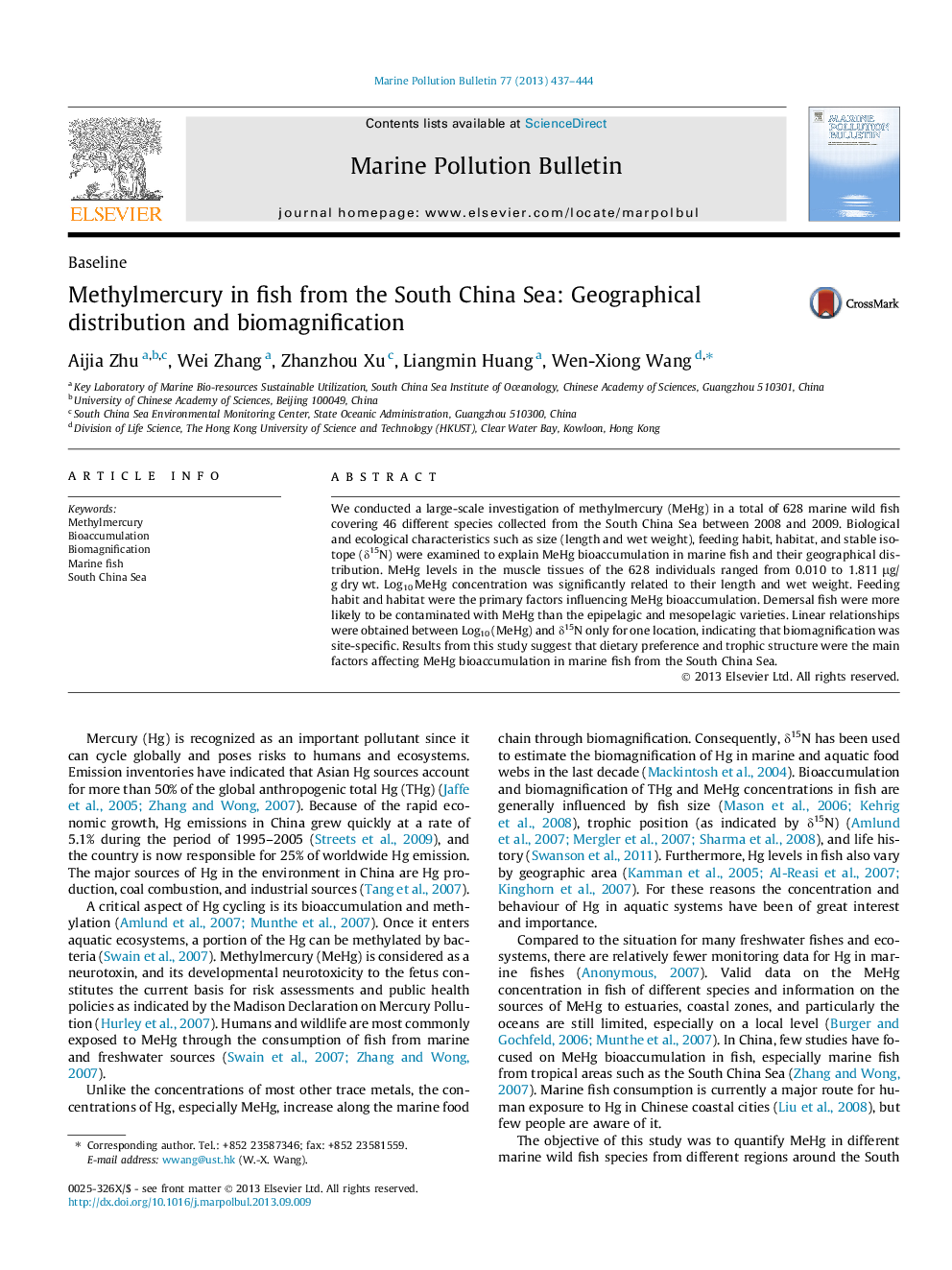| Article ID | Journal | Published Year | Pages | File Type |
|---|---|---|---|---|
| 6359383 | Marine Pollution Bulletin | 2013 | 8 Pages |
Abstract
We conducted a large-scale investigation of methylmercury (MeHg) in a total of 628 marine wild fish covering 46 different species collected from the South China Sea between 2008 and 2009. Biological and ecological characteristics such as size (length and wet weight), feeding habit, habitat, and stable isotope (δ15N) were examined to explain MeHg bioaccumulation in marine fish and their geographical distribution. MeHg levels in the muscle tissues of the 628 individuals ranged from 0.010 to 1.811 μg/g dry wt. Log10 MeHg concentration was significantly related to their length and wet weight. Feeding habit and habitat were the primary factors influencing MeHg bioaccumulation. Demersal fish were more likely to be contaminated with MeHg than the epipelagic and mesopelagic varieties. Linear relationships were obtained between Log10 (MeHg) and δ15N only for one location, indicating that biomagnification was site-specific. Results from this study suggest that dietary preference and trophic structure were the main factors affecting MeHg bioaccumulation in marine fish from the South China Sea.
Related Topics
Physical Sciences and Engineering
Earth and Planetary Sciences
Oceanography
Authors
Aijia Zhu, Wei Zhang, Zhanzhou Xu, Liangmin Huang, Wen-Xiong Wang,
